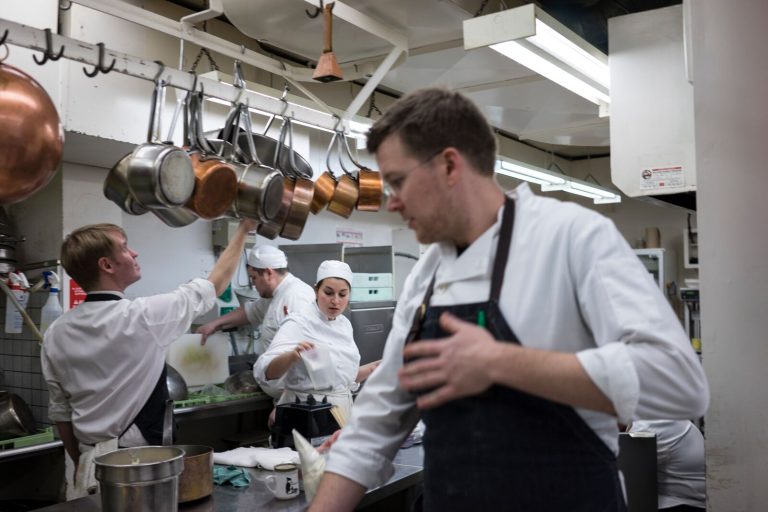
Level Two Wine
The course will introduce students to the secondary grape varietals and explore the stylistic differences between varietals/regions.

The course will introduce students to the secondary grape varietals and explore the stylistic differences between varietals/regions.

Preparing a written menu package for one menu will provide the student chef with the opportunity to critically analyse the menu. The exercise requires students to examine the style of cuisine, gastronomical and nutritional approaches, food styling, and design features of the menu and the cuisine it represents, and the menu’s marketability in today’s restaurants.

In this component, the student chef will prepare one menu package: an organizational analysis of the menu. Issues considered include: an organizational chart, job specifications and training action plans.

As part of the Restaurant Labs, students take on senior service roles in the dining room, acting as Maitre d’Hotel, Sommelier and Server several times during the year, receiving guidance and feedback from the service instructor. Students hone their service skills and develop confidence and expertise dealing with diners.

The Restaurant Lab component – the Stratford Chefs School dinners and lunches – is a practical cookery exercise in which the student continues to develop basic culinary skills. In addition, the student has the opportunity to understand three very different applications of cuisine: modern classical French; International – historical and modern – and contemporary cuisine as practiced by the School’s International Chefs in Residence.

This course examines restaurant concepts such as bistro, classical and modern. The course examines everything that influences our perception of a restaurant – decor, the grooming of the staff and clients, food and drink presentation, background music, lighting, flowers, style of service and graphics. The course also explains some of the less glamorous requirements of opening a restaurant including: zoning, building code, fire code, and accessibility compliance.

This component builds on the knowledge and skills developed in Level 1 Pastry. The student will learn more complex pastry techniques and applications. Recurring techniques in the Restaurant Labs such as puff pastry and bread making will be reviewed in class to ensure that the student has a solid base of understanding.

This component reinforces material covered in Level 1 Cookery and Commodities. The student chef will develop the practical and theoretical skills necessary for operating a kitchen in a small restaurant, including everything from purchasing ingredients, dealing with suppliers and judging quality, to basic culinary preparations. The course covers the basics in butchery, fish and shellfish preparation, garde-manger work: pâtés, terrines, sausages, curing, preserving, cold and hot sauces, molecular gastronomy and cheeses.

This component will broaden the student’s knowledge of the field of gastronomy through reading material, group work and written exercises. The work of Brillat-Savarin is examined in order to draw parallels between the gastronomy of today and the gastronomy of the past. Biographies of 20th-century figures in the field of gastronomy are studied and reviewed. The subject of taste is examined from the perspective of the food-production system and the chef as an agent of change.

This course provides the student with the knowledge and ability to communicate effectively in Front of House and with the public generally. Students gain experience in communicating with restaurant patrons in the dining room through simulations. They prepare one speech to present to the Restaurant Lab diners, and three sets of social media posts to promote their labs.

This class will provide the student with a sound approach to the business management techniques needed to become a professional chef/restaurant owner. The student will study general business techniques and learn how to complete a business plan for a prospective business. The need for a chef to be a knowledgeable businessperson is the underlying theme of this course, which focuses

In order to complete Level One and qualify for Level Two, each student must provide the Stratford Chefs School with evidence of having successfully completed a 7-month summer internship between Level One and Two. Students have the opportunity to intern at a restaurant of their choosing, should they be permitted to work there. Below are some of the restaurants our students have interned at.